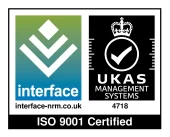Manufactured copper flat bars play a crucial role in industries like building, electrical engineering, and transportation. Their durability, conductivity, and corrosion resistance make them a top choice for various applications. But how do manufacturers create these bars? This article explores the intricate process, from selecting raw materials to producing the final product.
Understanding Copper Flat Bars
What Are Copper Flat Bars?
Flat bars made of solid copper, which have a rectangular shape, find widespread usage in the electrical, plumbing, and industrial equipment industries. Power distribution systems and heat exchangers rely on their exceptional thermal and electrical conductivity.
Common Applications
- Electrical Industry: Used in switchgear, busbars, and transformers.
- Construction Sector: Applied in structural supports, roofing, and drainage systems.
- Manufacturing Industry: Utilised for machine components and precision engineering.
Now that we are aware of their significance, let’s examine the production process for these bars.
Step-by-Step Process of Manufacturing Flat Copper Bar
1. Raw Material Selection and Preparation:
The process starts by selecting high-quality copper, usually cathodes or scrap metal, and refining it for further use. Manufacturers, such as ILT Ltd., ensure that the copper they use fulfils strict purity and performance criteria.
- Manufacturers source copper cathodes from mining and smelting operations.
- They incorporate recycled copper to improve sustainability and reduce waste.
- They melt the raw material in a furnace to remove impurities before further processing.
2. Melting and Casting:
Following refinement, expansive furnaces subject the copper to melting processes at temperatures exceeding 1,000°C. Manufacturers shape the molten metal into large rectangular billets using continuous or semi-continuous casting techniques.
- Continuous Casting: Produces uniform copper billets with consistent mechanical properties.
- Semi-Continuous Casting: Suitable for thicker sections that require further rolling.
At this stage, the billets are cooled and prepared for the next phase.
3. Hot Rolling Process:
To get the thickness and width that are needed, the hot cast copper billets are put through rolling mills again. This step improves the mechanical qualities and surface finish.
- Hot rolling improves ductility and grain structure.
- It ensures uniform thickness across the bar’s length.
- The rolling process may involve multiple passes through different rollers.
4. Cold Rolling and Annealing:
After hot rolling, the bars are cold rolled to further polish their dimensions and surface quality. Cold rolling increases the strength and hardness of copper.
To relieve stress and increase malleability, the bars are annealed in a controlled atmosphere. This heat treatment procedure recovers the metal’s ductility, making it easier to manufacture or bend for final use applications.
5. Cutting and Surface Treatment:
Once we meet the required dimensions, we use precision shears or saws to cut the flat copper bars to length. Treatment then eliminates any oxidation or flaws in the surface.
- Pickling: Removes surface oxides and scales.
- Polishing: Improves aesthetics and prepares bars for finishing applications.
- Coating: Some copper bars receive protective coatings to enhance corrosion resistance.
Quality Control and Industry Standards
High-quality copper flat bars must meet specific industry standards to ensure reliability and safety.
Inspection and Testing of Copper Flat Bars:
Quality control is a crucial aspect of copper flat bar manufacturing. Some common tests include:
- Dimensional Accuracy Tests: Ensuring bars meet size specifications.
- Conductivity Testing: Checking electrical performance.
- Tensile Strength Testing: Assessing mechanical strength and durability.
- Surface Inspection: Identifying and eliminating defects.
Meeting International Quality Standards:
Manufacturers like ILT Ltd. adhere to globally recognised standards, such as:
- BS EN 13601: The European standard for copper bars used in electrical applications.
- ASTM B187: The American standard for copper bar specifications.
- ISO 9001: Quality management certification ensuring consistent production quality.
Factors Affecting Copper Flat Bar Quality
To ensure the highest quality, manufacturers focus on several key factors:
1. Copper Purity: The purity of the copper directly affects its conductivity and durability. High-purity copper (99.9% or above) is preferred for electrical applications.
2. Manufacturing Precision: Modern rolling mills and automated processes ensure precise thickness, width, and surface finish for different applications.
3. Heat Treatment Processes: Controlled annealing ensures that the metal retains its strength while remaining workable for fabrication.
4. Environmental Considerations: Sustainable manufacturing practices, including recycling and efficient energy use, reduce environmental impact while maintaining high-quality production.
Future Trends
1. Automation and AI Integration: The use of automated machinery and artificial intelligence (AI) in manufacturing increases efficiency and quality control. AI-powered defect detection systems save waste and improve precision.
2. Sustainable Manufacturing: Recycling copper waste and cutting energy use are two examples of how manufacturers are becoming green in response to stricter environmental restrictions.
3. Advanced Surface Coatings: New protective coatings are being created to make copper flat bars more resistant to corrosion and last longer, especially under extreme conditions.
4. Customisation and Precision Engineering: More businesses need copper bars that are cut to specific sizes for specific uses, which pushes precision cutting and finishing technologies forward.
Understands the Craftsmanship
Finding copper and polishing it, rolling it, and finishing it are all cautious steps in the process of making copper flat bars. Strict quality control measures and environmentally friendly practices enable the industry to meet today’s needs.
Understanding this process shows how well-made copper bars are and how important they are in many businesses. Flat copper bars play a vital role in enhancing technology and construction. Whether used in electrical systems or structural components, they provide strength, durability, and efficiency.
Milly Edwards
Sales and Marketing Executive: Responsible for creating content for ILF's social media channels, website, print media and promotional work.








